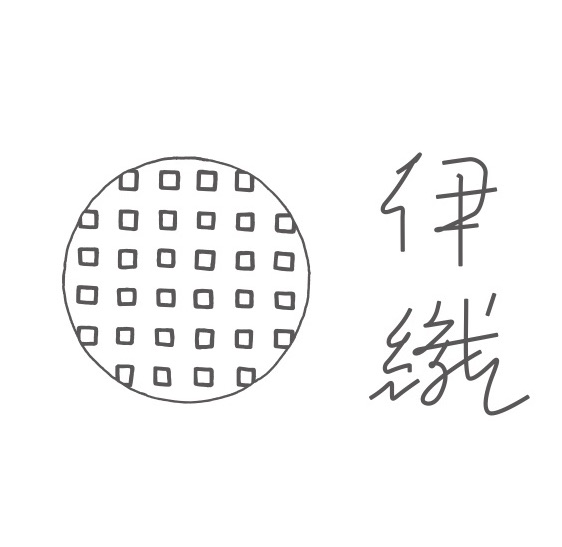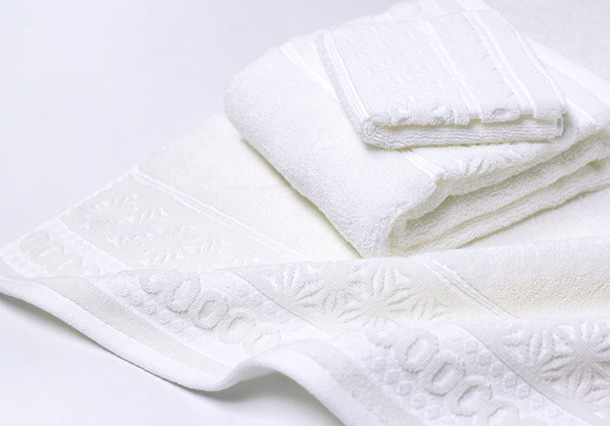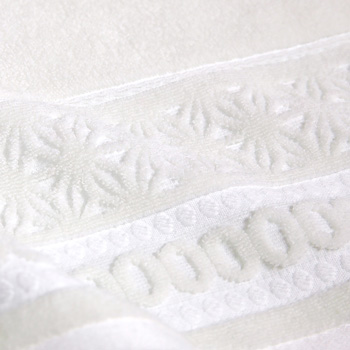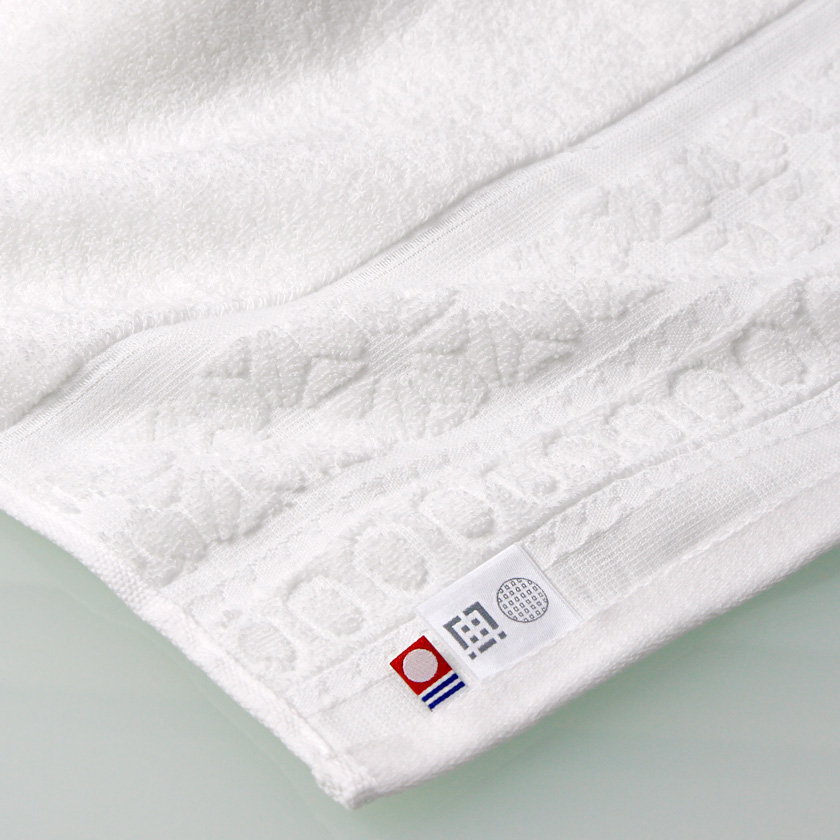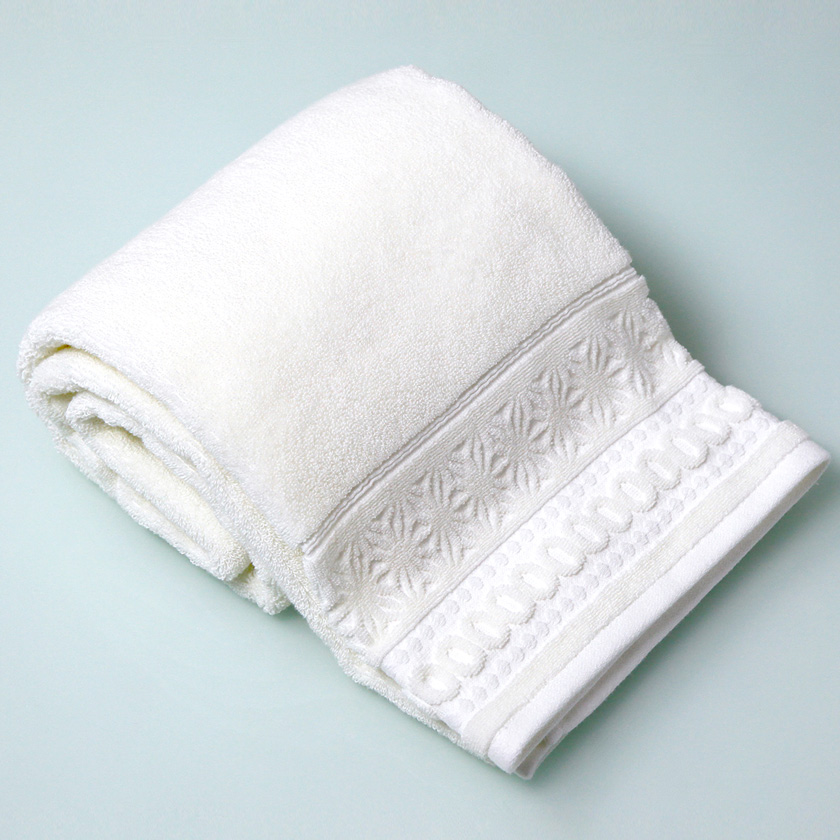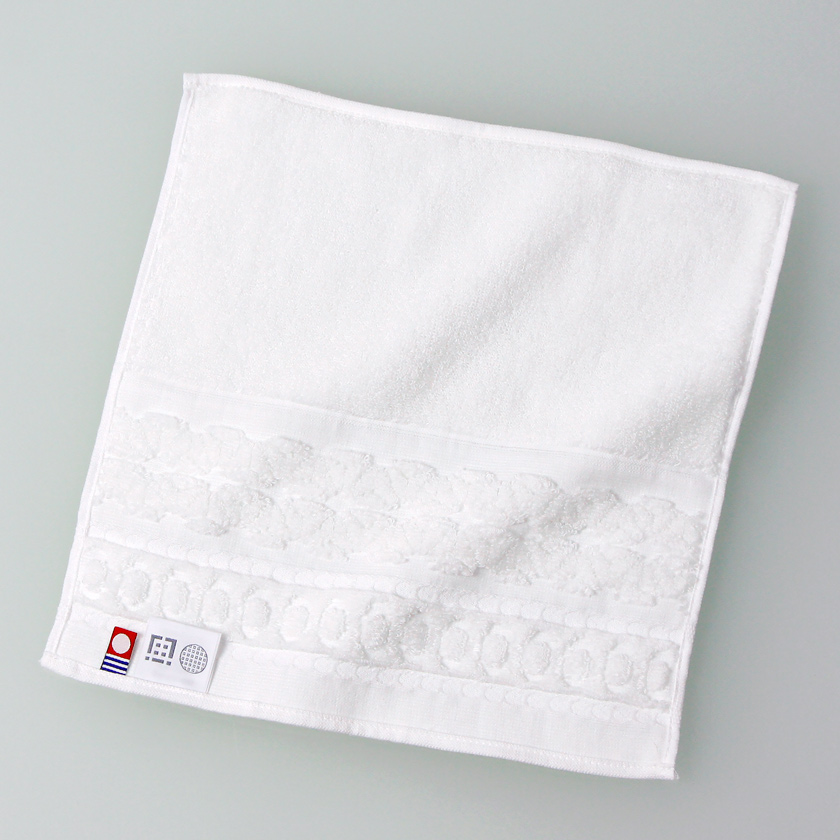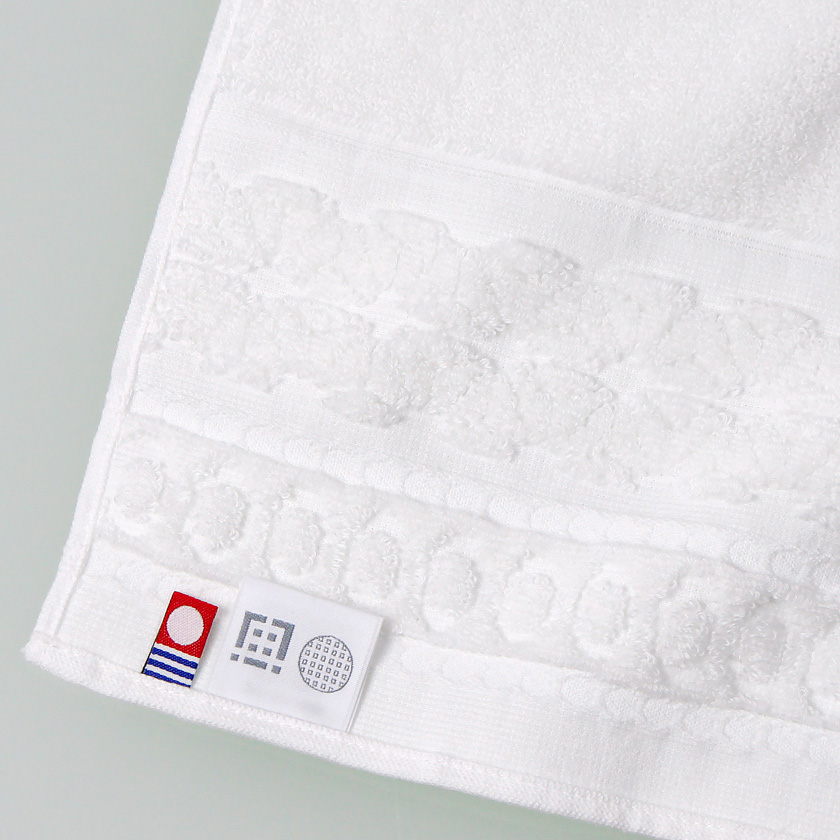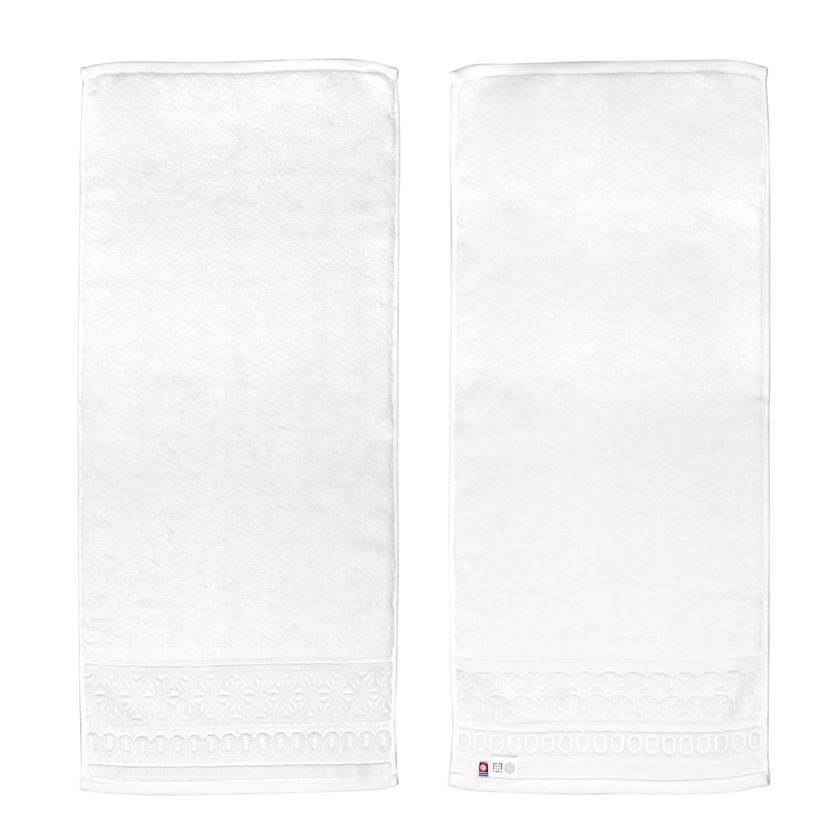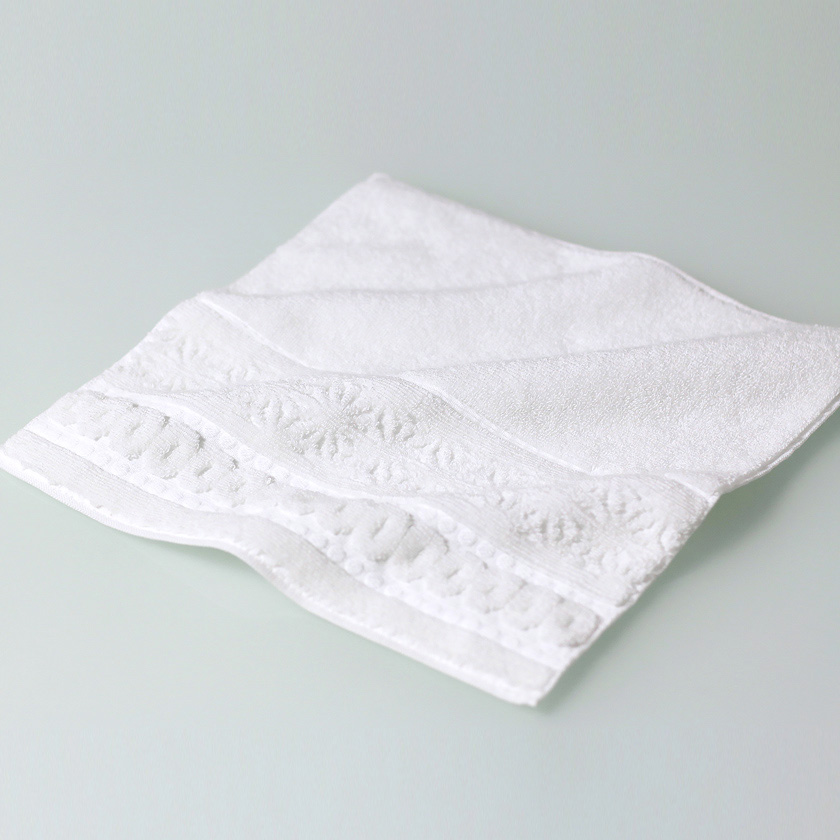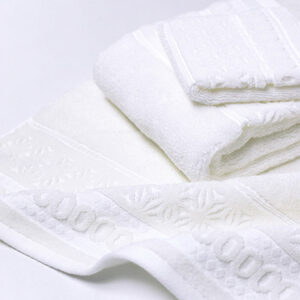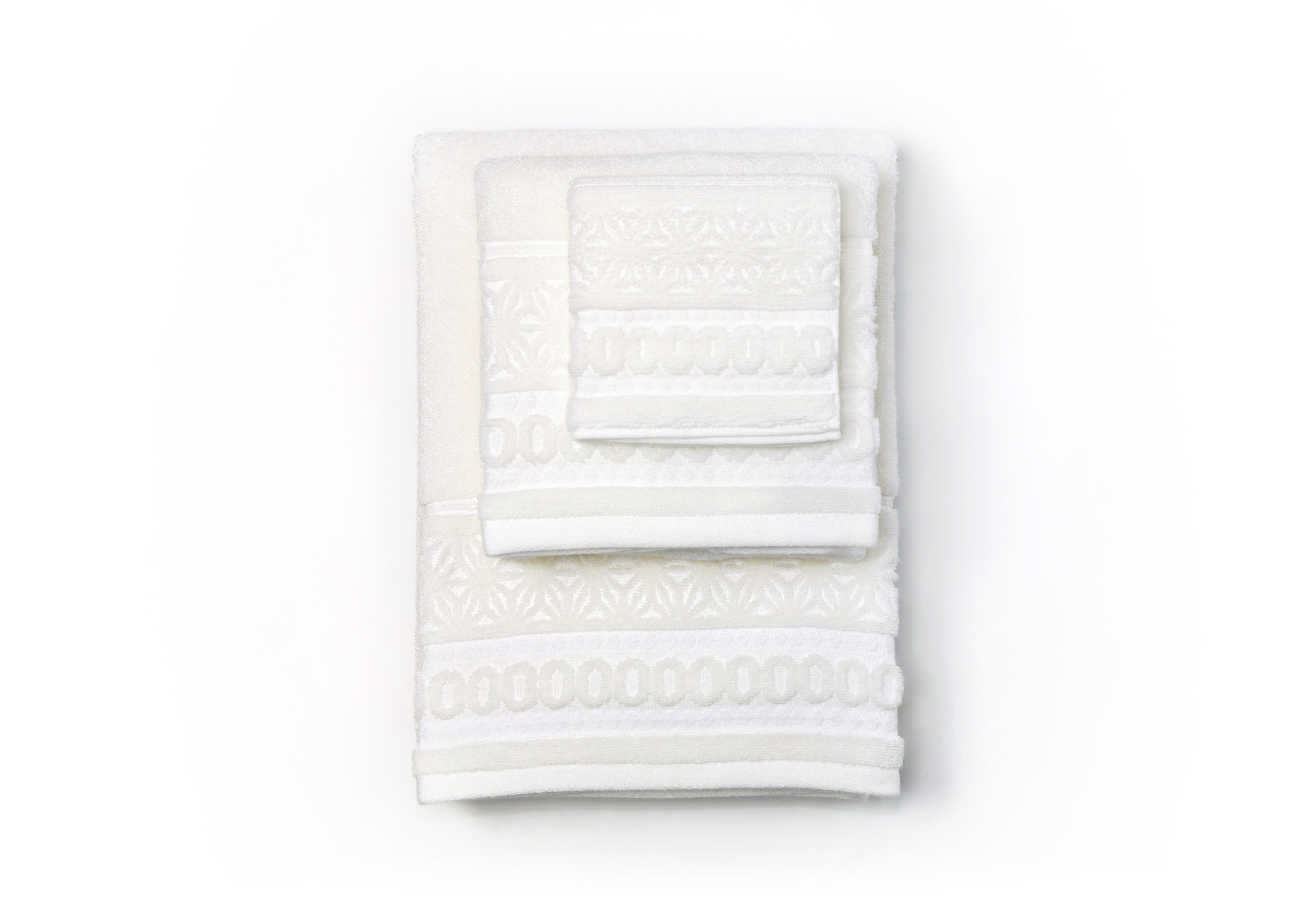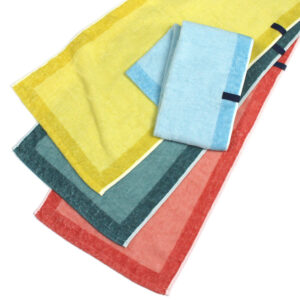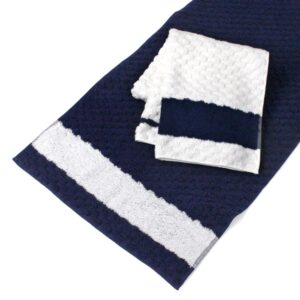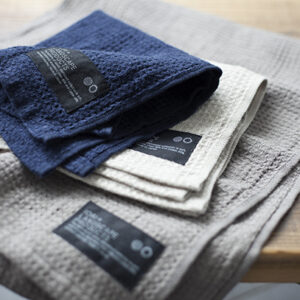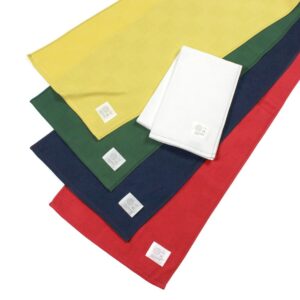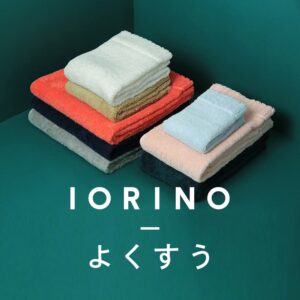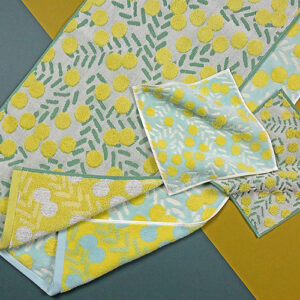IYO SILK-Luxury Towel
¥3,000 – ¥15,000
Iori’s original towel “IYO SILK” is woven with silk from Ehime prefecture and Ultimate Pima yarn, the best organic cotton. This towel is woven with silk from Ehime prefecture and Ultimate Pima yarn, the best organic cotton yarn. The softness of Ultimate Pima is combined with the softness of Iyo Silk to create the finest texture. The design is as simple as possible so that you can enjoy the texture to the fullest. The motifs of “cocoon ball”, “silkworm”, and “mulberry leaf” are placed on the edge of the towel. Of course, the towels come with the “Imabari Towel Mark” to prove that they have passed the quality standards of Imabari Towel, so you can be sure of their quality. This towel is recommended for home use and as a gift for special occasions.
Bath towel 68cm×140cm
Face towel 34cm×80cm
Mini handkerchief 25cm×25cm
cotton 93% & silk 7%
Made in Japan
Imabari towel

The town of Nomura in Nishiyo City, Ehime Prefecture, has long prospered through livestock and sericulture. The sericulture industry started in the early Meiji period (1868-1912), and by the early Taisho period (1912-1926), there were 1,138 sericulture farms in the town. Iyo raw silk was of high quality and was traded at a high price, and was even dedicated to the emperor.
However, it was gradually replaced by cheaper foreign products, and the farms were closed one after another after peaking in 1973. There are now only 10 silk farmers left in existence.
Knowing this situation, we planned to make towels using “kibiso,” which is produced in the process of silk yarn production, and “Ultimate Pima,” which is considered to be the best organic cotton.

Kibiso
Kibiso is the first thread that silkworms spit out when they make cocoons. Until now, it has never been used as a fiber for raw silk because it is thick and hard.
However, this time, through trial and error, we were able to regenerate it into soft silk thread. Silk has a unique luster and supple texture, not to mention its high moisture absorption and desorption properties.
However, this time, through trial and error, we were able to regenerate it into soft silk thread. Silk has a unique luster and supple texture, not to mention its high moisture absorption and desorption properties.

Ultimate Pima
Ultimate Pima, the highest grade of organic cotton, is used in combination with silk.
When made into towels, the comfortable texture with firmness and elasticity lasts for a long time, and the more you use it, the more it becomes familiar to your skin.
Ultimate Pima, the highest grade of organic cotton, is used in combination with silk.
When made into towels, the comfortable texture with firmness and elasticity lasts for a long time, and the more you use it, the more it becomes familiar to your skin.
| Weight | N/A |
|---|---|
| Size | Bath Towel (140x68cm), Mini Towel (25x25cm), Face Towel (80x34cm) |
Related products
¥800 – ¥1,800
¥1,800 – ¥4,500
¥800 – ¥4,500
¥1,000 – ¥4,500
¥800 – ¥5,000
